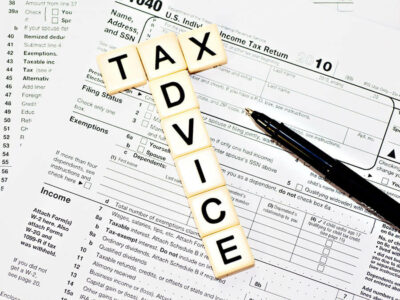Earnings Per Share EPS: What It Means and How to Calculate It

For example, a company might authorize 10 million shares to be created for its IPO, but end up actually only issuing nine million of the shares. This video explains several types of stocks and how they are presented in a balance sheet, including shares outstanding. When looking at EPS to make an investment or trading decision, be aware of some possible drawbacks. For instance, a company can game its EPS by buying back stock, reducing the number of shares outstanding, and inflating the EPS number given the same level of earnings. Earnings per share (EPS), a company’s profit divided by the amount of common stock it has in circulation, is one of the most closely observed metrics in investing.

Table of Contents
Debt / Equity
- Without weighting, companies could manipulate EPS by repurchasing shares near the end of the year to artificially boost per-share profit.
- Outstanding shares refer to the entire number of issued and owned shares of a company’s stock by investors, including institutional investors, insiders, and retail investors.
- The process of dilution can be through conversion through holders with secondary offerings or optionable securities.
- Now the matter of thought is, should we take 1000 shares outstanding as denominator or 2000.
- The dividend percentage that they will yield is specified in the prospectus.
- It excludes closely held shares, which are stock shares held by company insiders or controlling investors.
An increase in the number of shares outstanding boosts liquidity but increases dilution. Earnings per share is how to find shares outstanding one of the most important financial metrics employed when determining a firm’s profitability on an absolute basis. It is also a major component of calculating the price-to-earnings (P/E) ratio, where the E in P/E refers to EPS. By dividing a company’s share price by its earnings per share, an investor can see the value of a stock in terms of how much the market is willing to pay for each dollar of earnings. Earnings per share is a measure of a company’s valuation, calculated by dividing its profit by the number of shares outstanding. A company’s market capitalization is the current market value of all of its outstanding shares.

Implications of a Stock Split
Both market capitalization and shares outstanding refer to public companies, as they have publicly listed shares, whereas private companies do not. Let’s take a look at what the difference is between market capitalization and shares outstanding. Let’s say that Company A has $12 million in stockholders’ equity, $2 million of preferred stock, and an average of 2,500,000 shares outstanding. You can use the book value per share formula to help calculate the book value per share of the company.
Payout Ratio
The weighted average shares outstanding, or the weighted average of outstanding shares, takes into consideration any changes in the number of outstanding shares over a specific reporting period. In effect, it weights any change in the number of shares outstanding according to the length of time that change was in effect. Shares outstanding include shares owned by retail and institutional investors and restricted shares held by company officials and employees. Changes in the composition of the holdings do not change the number of total shares outstanding.

Do Shorts Increase the Float of a Stock?
A company may announce a stock split to increase the affordability of its shares and grow the number of investors. For instance, a 2-for-1 stock split reduces the price of the ledger account stock by 50%, but also increases the number of shares outstanding by 2x. Several types of securities can be converted into common stock, including convertible bonds, convertible preferred stock, employee stock options, rights, and warrants. Options and warrants are one aspect of the difference between basic shares outstanding and diluted shares outstanding. Yes, low float in stocks can be a good indicator of potential high-volume stock movements. This is because low floats tend to reduce the number of available shares that can be traded, which increases the average demand for each share and makes it easier for buyers to drive up prices.
Outstanding Shares
- Investors always consider the diluted earnings per share, not the basic earnings per share though most of the time, basic EPS gives a true reflection.
- Once you have collected the total number of preferred shares, common shares outstanding, and treasury shares, you’re ready to do your calculation.
- For a long time, it was considered standard to include only the number of options and dilutive securities that are exercisable in the calculation of diluted shares, as opposed to outstanding.
- Market capitalization and shares outstanding are closely related but serve distinct purposes.
- Therefore, it is important to consider both equity and market values when evaluating a stock.
Diluted EPS is always less than the basic EPS, as the denominator in the latter is higher. Companies with options, convertible bonds, etc., disclose both basic as well as diluted EPS in their financial disclosures. Moreover, the number of shares outstanding is extremely useful when monitoring how a company conducts its business, as things like stock splits also affect share numbers. Here, the balance sheet reports 8,019 million shares issued and 3,901 million treasury shares, as of September 30, 2022. For example, when shares outstanding are going up, the ownership stake of shareholders is diluted. And when shares are bought back, investors end up owning more of the company.

- Outstanding shares refer to the authorized shares that have been issued to a company’s shareholders, excluding the treasury stock retained by the company itself.
- Earnings per share would be the net income that common shareholders would receive per share (company’s net profits divided by outstanding common shares).
- Read on to learn how to calculate outstanding shares so you can begin mastering the market.
- When it comes to calculating dividends paid per share, it is important not to confuse issued shares with shares outstanding.
- You must follow these five steps to determine the Outstanding Shares Weighted Average.
The number of outstanding shares affects several key financial metrics and ratios, including earnings per share (EPS) and price-to-earnings (P/E) ratio. Restricted shares, such as preferred shares, are not available to the public. Management often sells restricted shares to Coffee Shop Accounting company insiders or institutional investors.
Share this content:
Post Comment